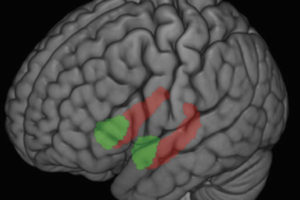A new study from the Center for Healthy Minds at the University of Wisconsin–Madison suggests that depressed patients are unable to sustain activity in brain areas related to positive emotion.
The study challenges previous notions that individuals with depression show less brain activity in areas associated with positive emotion. Instead, the new data suggest similar initial levels of activity, but an inability to sustain them over time. The new work was reported online this week (Dec. 21) in the Proceedings of the National Academy of Sciences.
“Anhedonia, the inability to experience pleasure in things normally rewarding, is a cardinal symptom of depression,” explains UW–Madison graduate student Aaron Heller, who led the project. “Scientists have generally thought that anhedonia is associated with a general reduction of activity in brain areas thought to be important for positive emotion and reward. In fact, we found that depressed patients showed normal levels of activity early on in the experiment. However, towards the end of the experiment, those levels of activity dropped off precipitously."
“Those depressed subjects who were better able to sustain activity in brain regions related to positive emotion and reward also reported higher levels of positive emotion in their everyday experience,” Heller continues.






